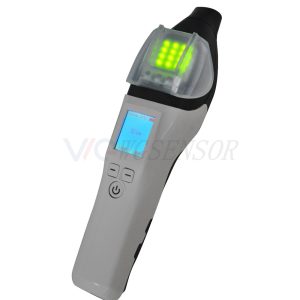Alcohol detection technology has undergone a remarkable evolution, transforming from rudimentary devices to sophisticated systems that ensure safety across various domains. Here is a comprehensive exploration of the historical milestones in the development of alcohol detectors:
1. Breathalyzers – Early Beginnings: The inception of alcohol detection can be traced back to the invention of the breathalyzer in the early 20th century. Dr. Robert Borkenstein’s creation in the 1950s marked a significant milestone. These devices measured Blood Alcohol Concentration (BAC) by analyzing alcohol content in a person’s breath.
2. Semiconductor-Based Sensors: Advancements in sensor technology led to the development of semiconductor-based alcohol detectors in the 1970s. These sensors utilized a chemical reaction between alcohol and semiconductor materials to measure BAC levels accurately.
3. Ignition Interlock Devices (IIDs): In the 1980s, ignition interlock devices emerged as a solution to prevent intoxicated individuals from operating vehicles. IIDs required a sober breath sample from the driver before allowing the car to start, significantly reducing drunk driving incidents.
4. Infrared Spectroscopy: The introduction of infrared spectroscopy in the 1990s revolutionized alcohol detection. This technique utilized infrared light to analyze molecules in a breath sample, offering more precise and reliable BAC measurements.
5. Miniaturization and Portability: Advancements in microelectronics led to the miniaturization and portability of alcohol detectors. Handheld devices became prevalent in law enforcement, allowing quick and on-site BAC testing.
6. Fuel Cell Technology: Fuel cell-based breathalyzers gained prominence in the 2000s due to their accuracy and reliability. These devices measured BAC by oxidizing alcohol, producing an electrical current proportional to the alcohol content.
7. Smart Integration and Connectivity: Recent advancements have seen the integration of alcohol detection technology into various smart systems. Some vehicles now come equipped with built-in alcohol detectors, enhancing safety by preventing drunk driving.
8. Artificial Intelligence and Machine Learning: Incorporating AI and machine learning algorithms has enhanced the accuracy and adaptability of alcohol detectors. These technologies enable devices to continuously learn and improve performance based on various environmental and user-specific factors.
9. Future Prospects – Wearable and Non-Invasive Solutions: Ongoing research focuses on developing wearable and non-invasive alcohol detection methods, such as wearable biosensors or touch-based detectors, that could seamlessly integrate into daily life without inconvenience.
The evolution of alcohol detectors reflects a relentless pursuit of enhanced accuracy, reliability, and user-friendliness. From the bulky breathalyzers of the past to the seamless integrations of modern technology, the trajectory of development signifies a commitment to enhancing safety and reducing the risks associated with alcohol consumption, especially in scenarios involving driving and public safety.


Please contact us for free quotation by form below. We promise the quickest response within 24 hours: